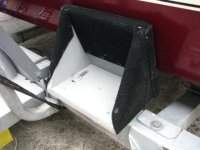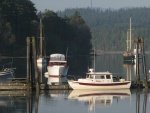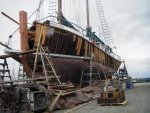NancyandBud
New member
- Joined
- Aug 15, 2016
- Messages
- 199
- Reaction score
- 0
- C Dory Year
- 2001
- C Dory Model
- 22 Cruiser
- Vessel Name
- Willow
We now own a roller trailer, something we have never had before.
I always assumed that the set up of the rollers on pivoting mounts would automatically center the boat on the trailer.
Perhaps they are not properly adjusted on our trailer as the boat wants to move to starboard by several inches.
We are leaving tomorrow for a few days on KY Lake and I have a brand new ratchet strap to hold it down.
What say you? Rollers improperly adjusted? Just the way they are? Something else?
All answers appreciated. :lol:
Correct answers? :love
I always assumed that the set up of the rollers on pivoting mounts would automatically center the boat on the trailer.
Perhaps they are not properly adjusted on our trailer as the boat wants to move to starboard by several inches.
We are leaving tomorrow for a few days on KY Lake and I have a brand new ratchet strap to hold it down.
What say you? Rollers improperly adjusted? Just the way they are? Something else?
All answers appreciated. :lol:
Correct answers? :love



